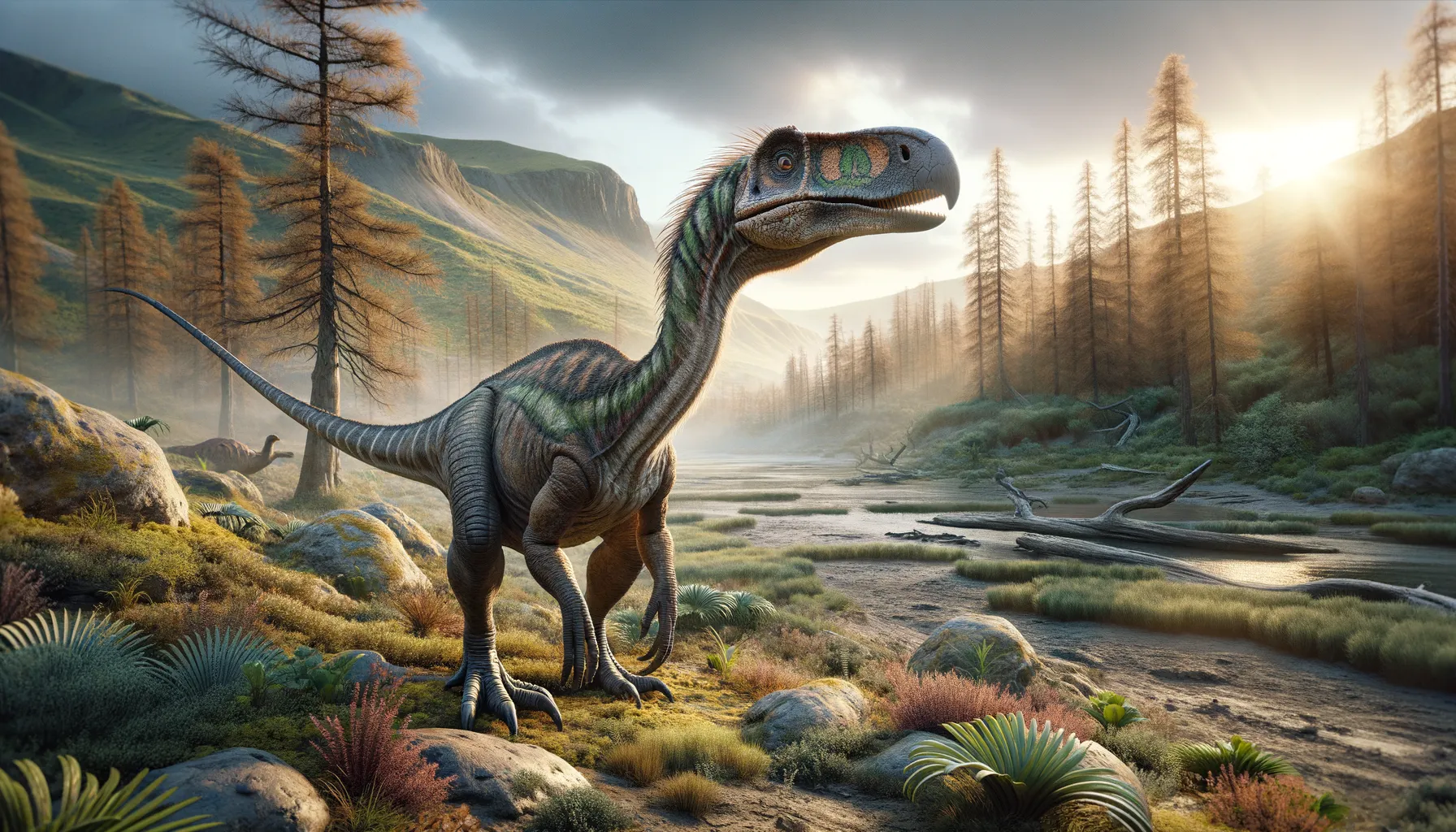
Haya
Small, swift, and sly in the Cretaceous world.
Period
Cretaceous
Length
Roughly 1.5 meters in length.
Height
About 1 meter tall at the hip.
Weight
Weighed approximately 20 kilograms.
Haya was a small, bipedal herbivore that lived during the Late Cretaceous period. With a beak adapted for eating plants, it roamed the ancient landscapes now known as Mongolia. Haya filled a niche as a ground-dwelling browser, likely living in groups to forage for food. Its relatively small size and agility may have helped it evade predators, making it an interesting subject of study for understanding Late Cretaceous ecosystems.
Diet
Haya primarily fed on plants, using its beak to clip leaves and stems. It likely supplemented its diet with fruits and seeds as opportunities arose.
Hunting
Haya did not hunt in the traditional sense, as it was a herbivore. Instead, it foraged for plant material on the forest floor and among low shrubs.
Environmental challenges
Haya faced the challenge of finding enough food in a constantly changing environment, where seasonal variations could affect plant availability. Predators such as small theropods were a constant threat, requiring Haya to be vigilant and quick. Competition with other herbivores for resources also posed a significant challenge. Periodic climate fluctuations could have further stressed its habitat, necessitating adaptability.
Speed
Moderately quick for short spurts.
Lifespan
Estimated to be around 10 to 20 years.
First discovery
Discovered in Mongolia in 2009.
Fun Facts
- Haya was a small plant-eating dinosaur that lived about 80 million years ago.
- It was named after a Mongolian mythological horse, reflecting its discovery in the Gobi Desert of Mongolia.
- Haya was roughly the size of a turkey, which makes it one of the smaller dinosaurs known.
- Its teeth suggest it was an herbivore, munching on plants available in its environment.
- The Haya walked on two legs and was part of a group known as ornithopods, which includes other small plant-eaters.
- Fossils of Haya provide important clues about dinosaur diversity and evolution in Asia during the Late Cretaceous period.
Growth and Development
Haya hatched from eggs and went through rapid growth phases during its early life to quickly reach a size less vulnerable to predators. Growth rates likely slowed once it reached maturity. Like many dinosaurs, it may have shed its skin periodically as part of its growth process. Development involved learning crucial survival skills, such as foraging and evading predators.
Habitat
Haya lived in a region characterized by semi-arid conditions with seasonal rainfall, supporting a mix of forests and open terrains. Its habitat was shared with other dinosaurs, mammals, and early birds. The environment likely included river floodplains, providing fresh water and diverse plant life for sustenance. Such ecosystems supported a wide range of life forms, contributing to a dynamic community.
Interaction with other species
Haya may have lived in small groups, which provided safety in numbers against predators. It likely shared its habitat with other herbivores, with whom it competed for food resources. Predators such as small carnivorous dinosaurs posed a threat, requiring constant vigilance. Through these interactions, Haya played a role in the complex web of its ecosystem, affecting plant populations and predator-prey dynamics.
Natural lifespan
Haya had a natural lifespan estimated between 10 and 20 years.
Reproduction
Haya reproduced by laying eggs, likely in nests similar to other small dinosaurs. After laying eggs, parents may have provided minimal care, relying on rapid offspring growth to ensure survival. Nesting in clusters or colonies may have provided some protection against predators. These reproductive strategies allowed Haya to maintain its population despite environmental challenges.
Social behaviour
Haya is believed to have been somewhat social, possibly living in small groups that provided mutual protection. This social structure would have helped in coordinating movements while foraging and escaping predators. Being part of a group also facilitated learning survival skills. Social behaviors included communication for alerting others to danger and finding food.
Fossil locations
Haya fossils have been primarily found in Mongolia, providing valuable insights into Late Cretaceous ecosystems. These fossil sites offer a glimpse into the diverse habitats of the region during this period. They contribute to the understanding of dinosaur distribution and evolution in Asia. Haya fossils help paleontologists piece together the ecosystem dynamics of the time.
